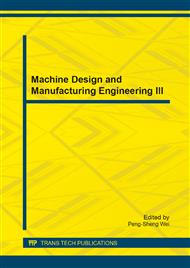p.29
p.33
p.37
p.43
p.47
p.51
p.55
p.61
p.65
Study on Hydrothermal Process Variables Correlation to WO3 Nanostructure through Design of Experiments (DOE) Approach
Abstract:
There are few known parameters which govern tungsten trioxide (WO3) hydrothermal synthesis process which includes material source concentration, synthesis temperature, duration, pH value and additive level. Using design of experiments (DOE) approach, a systematic experimental procedure was conducted to investigate the effect of each parameter to the final morphology of the synthesized nanostructure. Despite the response obtained from this study is in qulitative form, the analysis still can be done to identify the combination of variables that most likely can produce either 1-D, 2-D or 3-D nanostructure. This insight is essential before further optimization of the process can be done in order to predict the behavior of the WO3 hydrothermal synthesis process.
Info:
Periodical:
Pages:
47-50
Citation:
Online since:
July 2014
Price:
Сopyright:
© 2014 Trans Tech Publications Ltd. All Rights Reserved
Share:
Citation:


